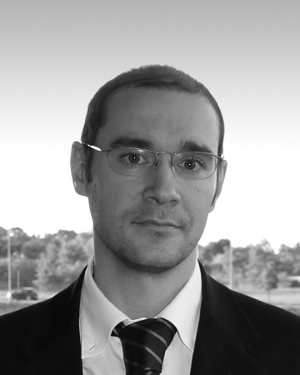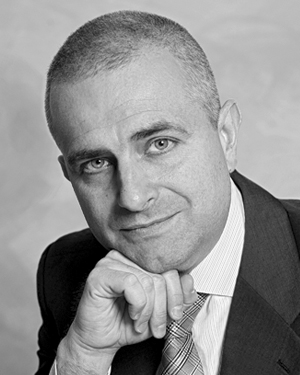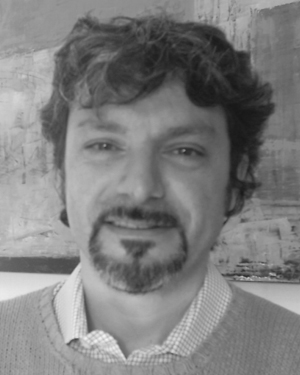References
a complete list of our contribution on this topic
Journal papers
Fabio Pareschi, Riccardo Rovatti, and Gianluca Setti, "EMI Reduction via Spread Spectrum in DC/DC Converters: State of the Art, Optimization, and Tradeoffs," IEEE Access, Vol. 3, pp. 2857-2874. 2015. ISSN: 2169-3536. doi: 10.1109/ACCESS.2015.2512383
abstract - Spread spectrum is a technique introduced for mitigating electromagnetic interference (EMI) problems in many class of circuits. In this paper, with particular emphasis on switching DC/DC converters, we consider the most common and most efficient known spreading techniques, looking for spreading parameters that ensure the highest EMI reduction and the lowest performance reduction in the circuit where the spreading is applied. The result is an interesting tradeoff not only between EMI reduction and performance drop, but also on the EMI reduction itself when considering different EMI victim models. The proposed analysis is supported by measurements on two switching DC/DC converters: 1) based on pulse-width modulation and 2) based on the resonant converter class.
Fabio Pareschi, Gianluca Setti, Riccardo Rovatti, and Giovanni Frattini, "Short-term Optimized Spread Spectrum Clock Generator for EMI Reduction in Switching DC/DC Converters," IEEE Transactions on Circuits and Systems I - Regular Papers, Vol. 61, No. 10, pp. 3044-3053. October 2014. ISSN: 1549-8328. doi: 10.1109/TCSI.2014.2327273
abstract - We present here a prototype of a Spread Spectrum Clock Generator designed for switching DC/DC converters, which has been optimized in accordance to EMC international regulations to improve EMI reduction with respect to standard approaches. Such an optimization has been obtained trough the theoretical computation of the power spectrum as measured by a spectrum analyzer when a chaotic or random-like PAM modulating signal is employed. To experimentally validate the achieved theoretical results, the circuit has been fabricated in CMOS 0.18 um technology, and embeds two simple and effective modulators, the first one relying on a full analog hardware, the second one on a simple digital core. Measurements on a DC/DC converter in accordance with EMC regulations confirm that the prototype can achieve a 7 dB EMI reduction improvement with respect to classical solutions based on out of audible triangular waveforms.
Fabio Pareschi, Gianluca Setti, Riccardo Rovatti, and Giovanni Frattini, "Practical Optimization of EMI Reduction in Spread Spectrum Clock Generators with Application to Switching DC/DC Converters," IEEE Transactions on Power Electronics, Vol. 29, No. 9, pp 4646-4657. September 2014. ISSN: 0885-8993. doi: 10.1109/TPEL.2013.2286258
abstract - We here consider the most common technique used in spread spectrum clock generators that is the frequency modulation of a timing signal by means of a triangularly shaped waveform. As a first step, we develop a reliable mathematical model of a spectrum analyzer, which allows us to compute the power spectrum as measured by this instrument for any signal put at its input. This is particularly important when considering spread spectrum clocking methods for electromagnetic interference reduction, since international regulations impose constraints on the peak of the spectrum of interfering signals as measured by this instrument. Thanks to the developed mathematical tool, we are able to theoretically prove that the maximum peak reduction of the measured spectrum is achieved for a well-defined frequency of the triangular driving signal. This is in contrast with what one can obtain by optimizing the theoretical power density spectrum, where the minimum interference is ideally obtained when the triangular signal has a vanishing frequency. The results are confirmed by measurements on two commercial dc/dc switching converters.
Fabio Pareschi, Gianluca Setti, and Riccardo Rovatti, "A 3 GHz Serial ATA Spread Spectrum Clock Generator Employing a Chaotic PAM Modulation," IEEE Transactions on Circuits and Systems I - Regular Papers, Vol. 57, No. 10, pp. 2577-2587. October 2010. ISSN: 1549-8328. doi: 10.1109/TCSI.2010.2048771
abstract - In this paper, we propose a prototype of a spread-spectrum clock generator which is the first known specifically meant generator for 3-GHz Serial Advanced Technology Attachment II (SATA-II) applications. A further innovative aspect of our prototype is that it takes advantage of a chaotic pulse-amplitude modulation as driving signal, instead of a triangular signal as in all spread-spectrum generators proposed so far in the literature for SATA-II. In this way, we are able to obtain the optimal theoretical electromagnetic-interference reduction by avoiding the periodicity of the modulated clock and completely flattening the peaks in the power spectral density. We also show that, despite the fact that such an unconventional aperiodic modulating signal is used, the clock can be recovered by exploiting a standard clock and data recovery circuit at the receiver side of the SATA-II bus. The circuit prototype has been implemented in 0.13 um CMOS technology and achieves a peak reduction greater than 14 dB measured at RBW=100 kHz, which is better than any other prototypes presented in the literature. The estimated random jitter is 5.4 ps, while the chip active area is 0.27x0.78mm² and the power consumption is as low as 14.7 mW.
Sergio Callegari, Riccardo Rovatti, and Gianluca Setti, "Spectral properties of chaos-based FM signals: Theory and simulation results," IEEE Transactions on Circuits and Systems I: Fundamental Theory and Applications, Vol. 50, No. 1, pp. 3-15, January 2003. ISSN: 1549-8328. doi: 10.1109/TCSI.2002.807510 - Winner of the 2004 IEEE CAS Darlington award
abstract - This paper addresses the problem of generating constant-envelope wideband (CEW) signals, for which applications are emerging both in telecommunications (as information carriers) and in digital/power electronics (to aid the synthesis of timing signals which favor electromagnetic compliance). A flexible generation technique consists in driving a frequency modulation (FM) modulator with random or chaotic sequences. Mathematical tools for predicting some spectral properties of random-FM and chaotic-FM CEW signals are herein introduced by commenting on recent results and presenting novel ones in a coherent framework.
Some Conferences papers
Fabio Pareschi, Gianluca Setti, Riccardo Rovatti, and Giovanni Frattini, "A Spread Spectrum Clock Generator Based on a Short-Term Optimized Chaotic Map," Proceedings of 37th European Solid-State Circuits Conference (ESSCIRC2011), pp. 507-510. ISBN: 978-1-4577-0704-9. Helsinki (Finland), September 12-16, 2011. doi: 10.1109/ESSCIRC.2011.6044933
Luca Antonio De Michele, Fabio Pareschi, Riccardo Rovatti, and Gianluca Setti, "Chaos-based High-EMC Spread-Spectrum Clock Generator", Proceedings of 17th European Conference on Circuit Theory and Design (ECCTD2005), pp. 165-168. ISBN: 0-7803-9066-0. Cork (Ireland), August 29 - September 2, 2005. doi: 10.1109/ECCTD.2005.1522936 - Winner of the ECCTD2005 best paper award
Fabio Pareschi, Luca Antonio De Michele, Riccardo Rovatti, and Gianluca Setti, "A PLL-based clock generator with improved EMC", Proceedings of 16th International Zurich symposium on Electromagnetic Compatibility (EMCZurich2005), pp. 367-372. ISBN: 3-9521199-9-7. Zurich (Switzerland), February 13-18, 2005. - Winner of the EMCZurich2005 best student paper award



